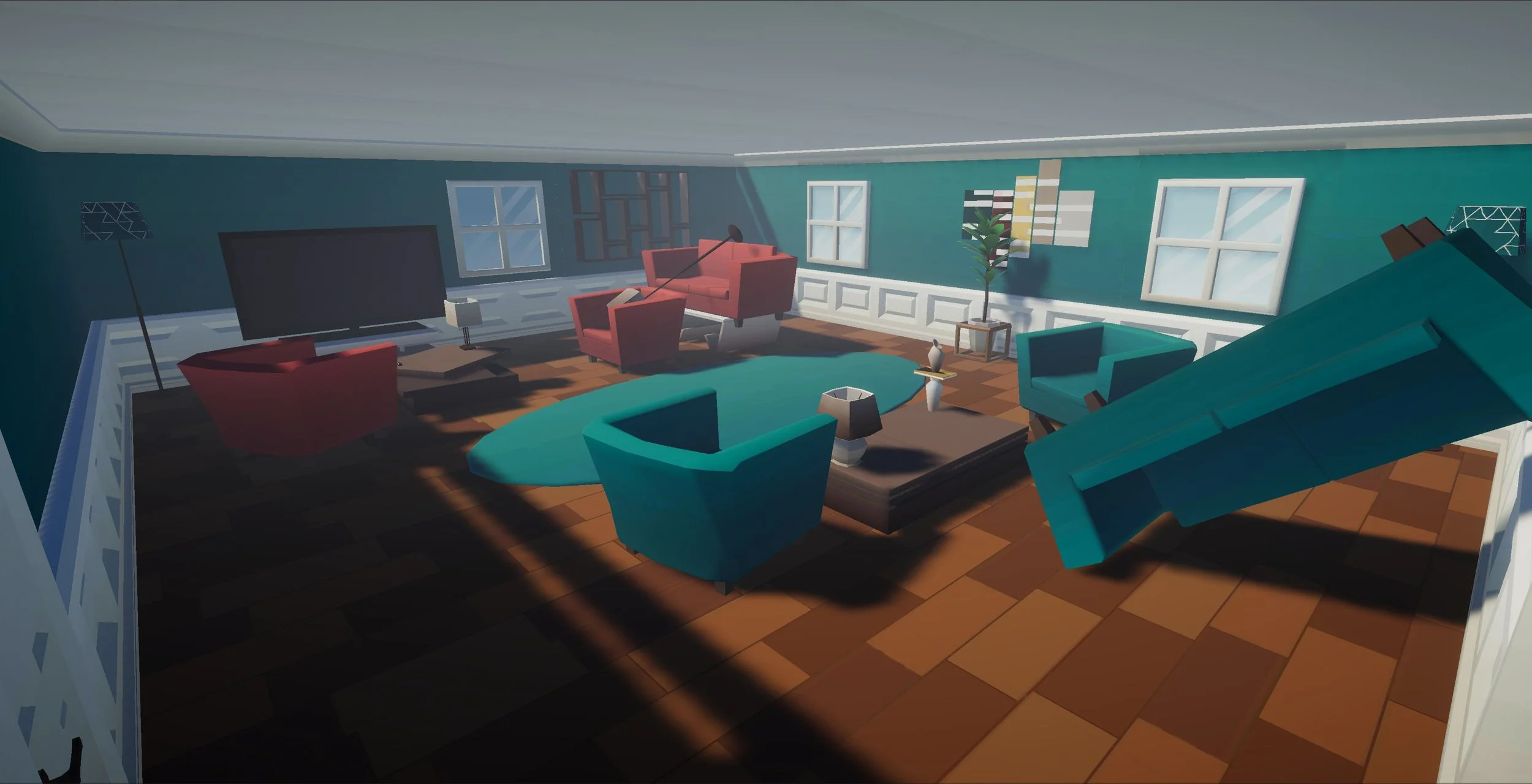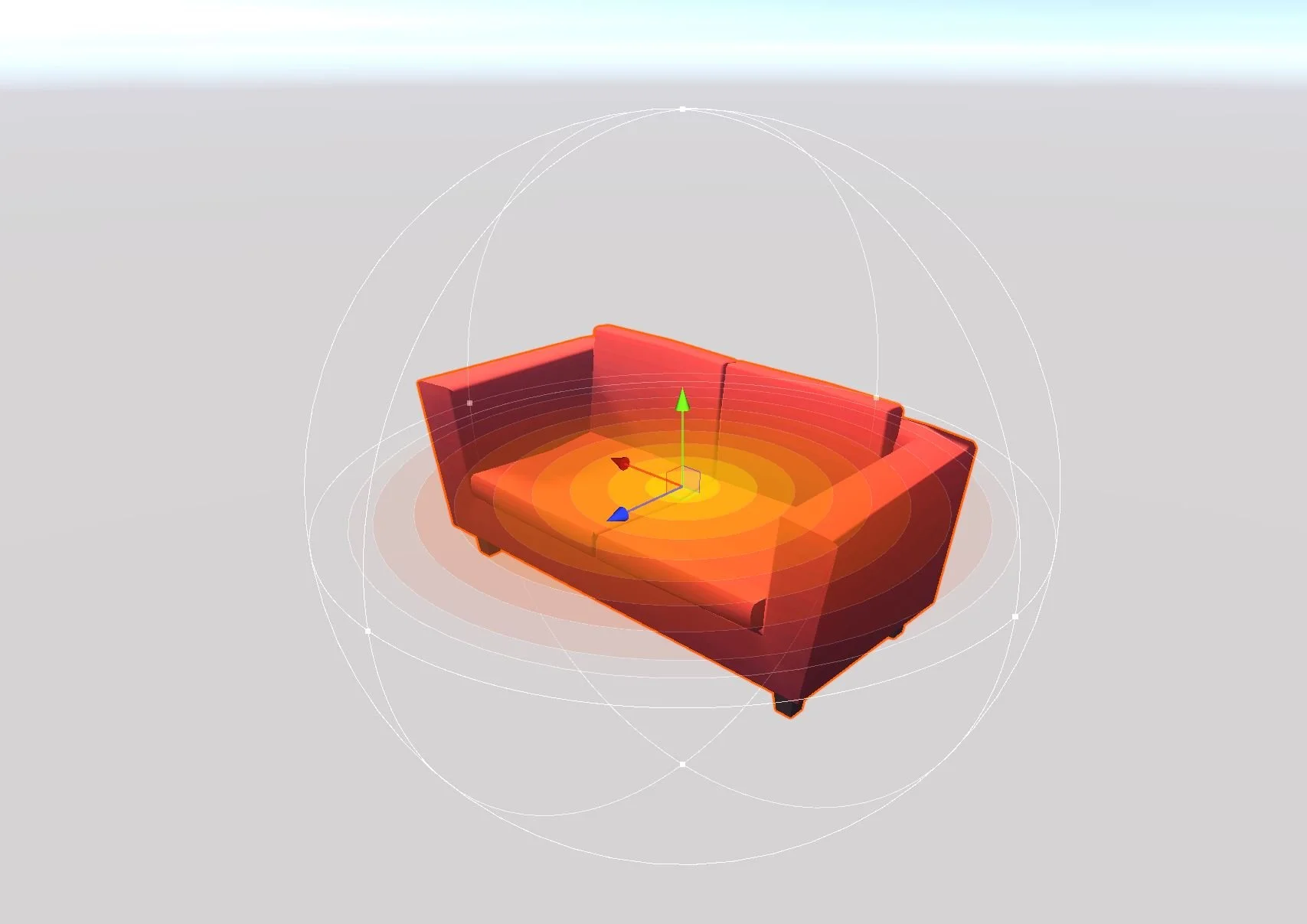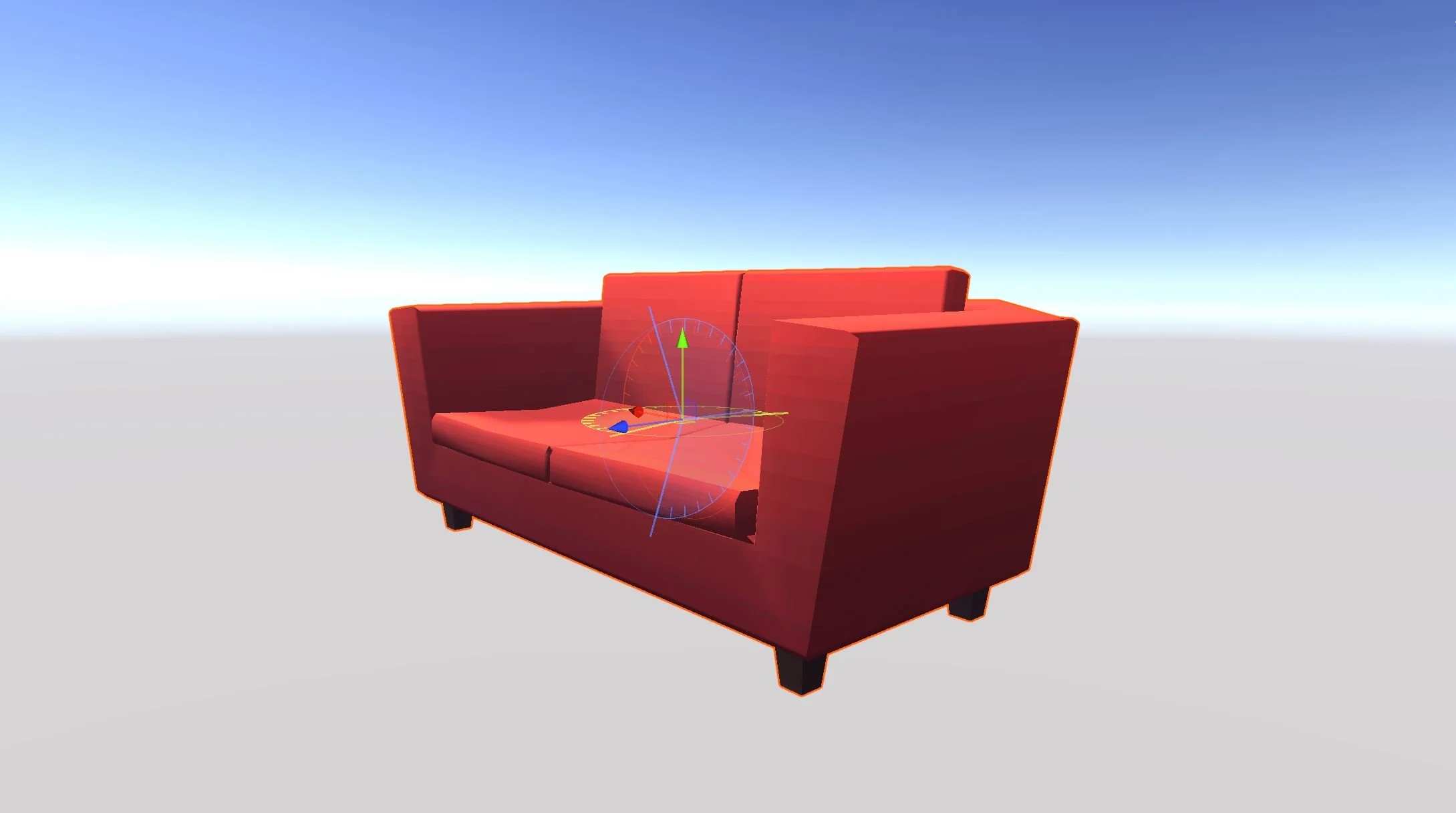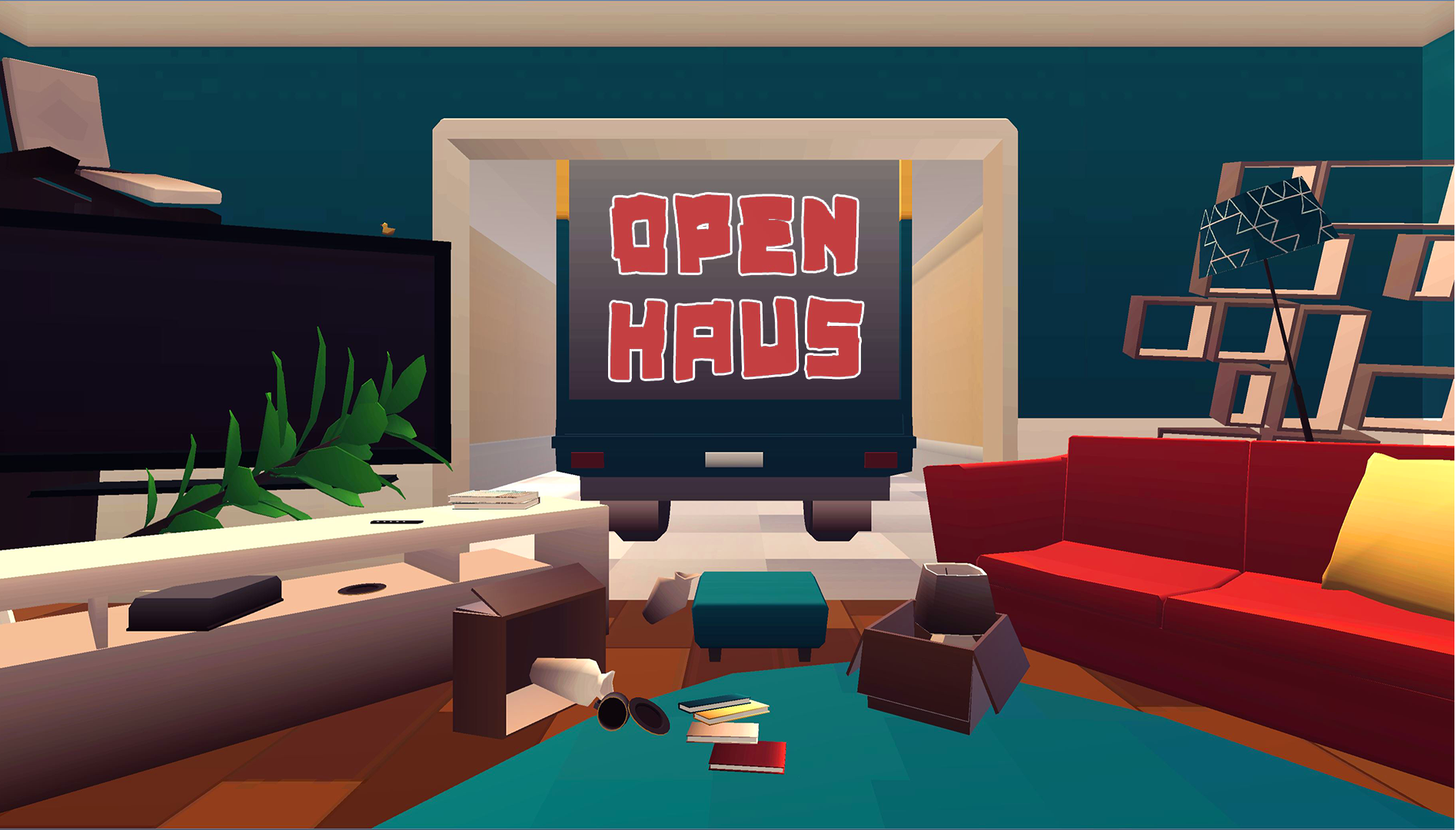
Open Haus is a single player VR game where players must use physics interactions to decorate a living room with furniture before time runs out.
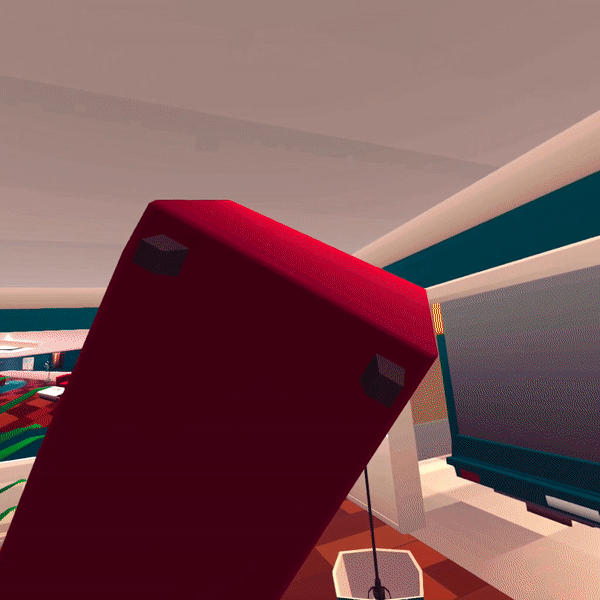
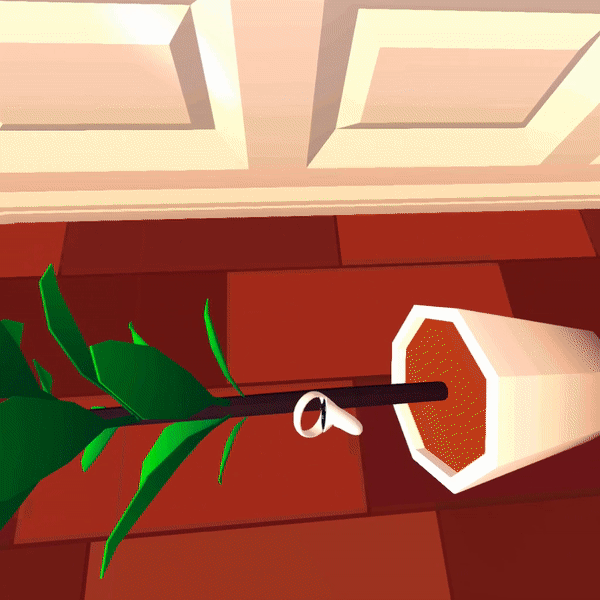
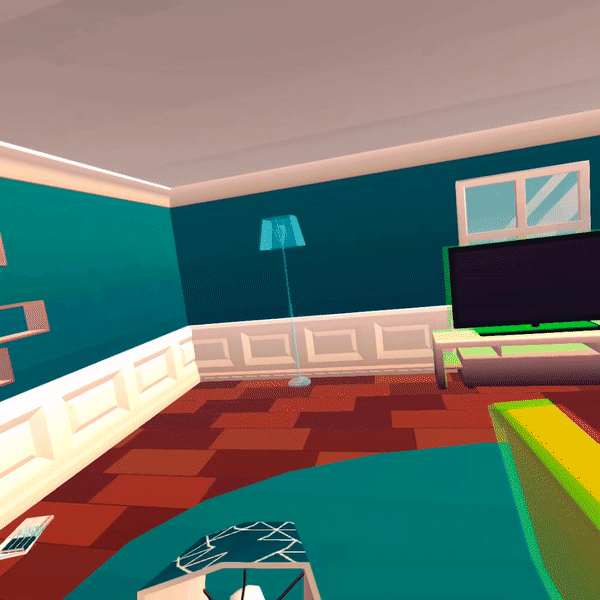
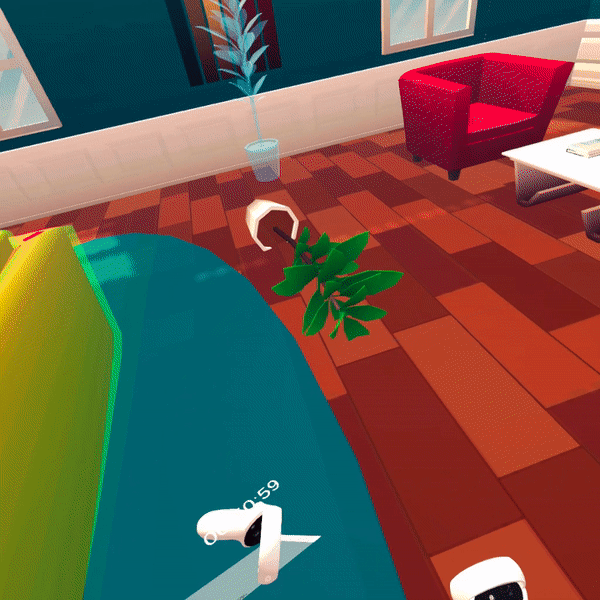
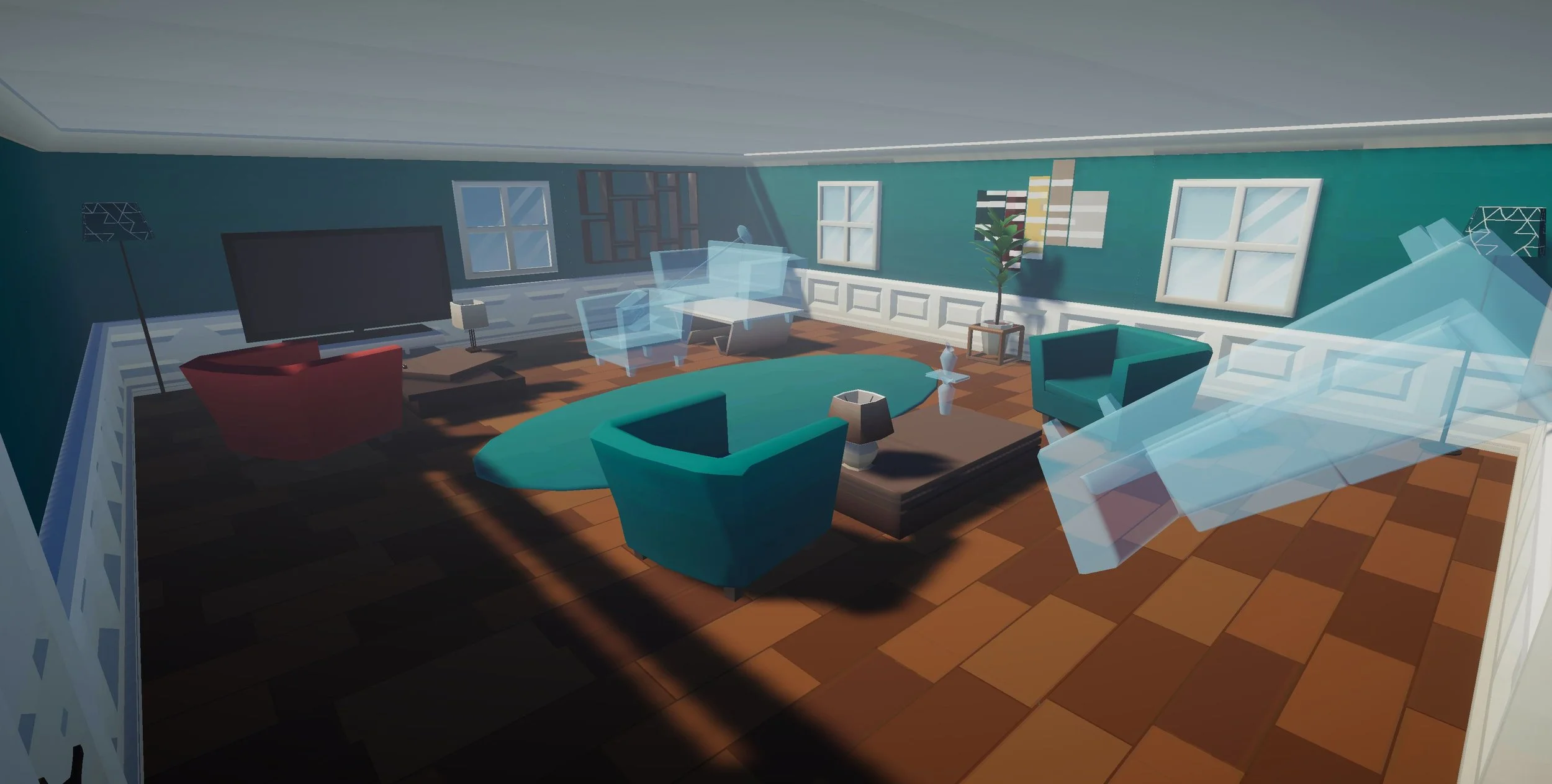
Project Outline
Timeframe: 4 weeks production
Engine: Unity
Roles: Gameplay Designer, Level Designer
Genre: Puzzle, Time Trial
Responsibilities
Concept and design a game for VR platforms
Pitch and present designed concept
Balance and adjust level parameters
Design and greybox level layouts
Playtest and iteration
Open Haus was a 4 week production for VR platforms. The objective of this project was to develop a VR project based off a prompt provided to the team by clientele. Our team chose the interior decorator prompt. For the duration of this project, designers and programmers were in development from day one with artists joining the team at the half way mark. This project came with a large learning curve, as no one on the team had done VR development before this project. With a total of 4 weeks for production, scope management was crucial to the teams success in getting a playable build in by the deadline. Art took a lot of consideration as well as the department only had half the total time to create assets.
The concept of Open Haus was inspired by the Facelift mini game from the original Mario Party games. Playing as an interior decorator, players were given an image of a furnished living room and a time limit. Players then had to use their hands and janky physics interactions to move the furniture into the room and set it up in the correct orientation with reference to the provided image before the time runs out.
The core mechanics of the game are the players hand interactions with physics objects, and a match-the-picture system. Players place the furniture in the correct location and rotation and are rewarded points in the form of a star rating depending on how accurate they are. If the player earns at least three stars they can progress to the next level.
Each piece of furniture the player can interact with has it’s own mass and drag tailored to the size of the furniture piece. This was used to create variety and challenge in the way the players complete the objective.
Large pieces of furniture, such as lounges, cabinets and TV’s cannot be grabbed and held by the player. Instead the must be pushed, dragged and flipped around to position them. Smaller objects like vases and books can be held and carried, but are far easier to knock over once they are placed.
To keep the scope manageable and the gameplay dynamic we used random generation for the games levels. We also limited the environments that the player would have to decorate to just one so we could keep on top of the asset list and save time creating levels. Each level takes place in the living room of the house to be decorated. The levels each share the same floorspace dimensions but have their own unique combination of furniture pieces and layout. This helps keep the level environments feeling fresh while also acting as the difficulty factor for each level.
The core game loop contains three levels. Each level has two variations that are randomly selected when the player reaches them in the loop. The harder levels have more furniture and heavier pieces. The target positions also become skewed and harder to place them in creating extra challenge.
The programming team created editor tools that allowed us to visualise the position of each furniture piece we wanted to be included in each level. These tools could also visualise the thresholds for both location and rotation of a furniture piece and where points would be awarded to the player. This sped up the design workflow exponentially as we could see through the gizmos how difficult the levels design was and could balance it and see the changes in real time.
If we had more time for development I would have liked to add in a few more environments such as a kitchen or bathroom, and added a couple of dynamic factors like earthquakes that could knock over furniture to create more suspense for the player. In the end we were happy with what we made and proud of what we achieved in such a short time frame with no prior VR experience.
